How to make actions in Slow Pitch Jigging
Basic Rod Action
Let’s take a look more closely at how to make the actions in Slow Pitch Jigging.
I’m showing the basic 1-pitch-1-jerk, which you should learn first. The tempo is basically 1 pitch per second.
1. Reel one turn
Keep the rod 90 degrees to the line. Reel 1 turn with acceleration and stop. The rod will give in nicely to the tension and bend. The jig is accelerating upward through the water, reaching top-speed at the time you stop reeling.
- What’s shown here is 1-Pitch-1-Jerk action. But the reeling can be 1 full turn, a half turn, or a quarter turn. You can also add bringing up and down the rod. But until you become familiar to the mechanism of this technique, it’s encouraged to practice with your rod in one position.
- 90 degrees is a standard position. If you keep the rod tip down-angled, the spring-up energy of the rod is low, therefore, the movement of the jig will be softer. If you keep the rod up-angled, the spring-up is stronger and the jig movement is more energetic.
2. Let the rod kick
You stop reeling and hold up the rod, letting the rod spring back up. The rod kicks up the line and releases the tension. The jig is whipped up free. With the momentum and hydrodynamics, the jig swims on its own. Depending on the shape and balance of the jig, some jigs really slide to the side, some twirl, some suspend, some start falling right away.
- The center-balanced jig gets in a horizontal position here. That is what Slow Pitch Jigging is aiming at. This is the moment for a bite. This and the fall that follows. Both are the moments that the jig is off the tensions. Jig is in a horizontal position. We are giving little moments like these for the fish to make a bite. If the fish makes a bite during the sliding, the fish is likely to get hooked by the head hooks. If during the fall, it’s likely to get hooked by the tail hooks. The fish always tries to bite on what looks like the head, that, to the fish, is “the front of the movement”.
- The most important factor here is to let the rod do the job. A lot of people can’t help doing something, only interfering your tackles potentials. You’ve done your pitch. Wait to see what it does. The common mistake is that you lower the rod after a pitch when the rod is springing back up. What you are actually doing is canceling the whip action of your rod. Of course it’s OK if you mean that. Occasional hi-speed lifts like that is very effective to attract your targets, and then you can make them bite in a couple of slow pitch following that. But if you want to get the jig horizontal, sliding to the side, you need to have a moment of stop reeling and holding up the rod for the spring-up action.
- The slow pitch rod is made of high-resilient crispy carbon material in a slow tapered parabolic actions. The blanks is so thin and firm. So the rod bends deeply, and springs back slowly and strongly with the whole length of the rod.
3. Let the jig fall
This is the continuity from Step 2. When the jig slides and loses the momentum, it starts falling. This is also a popular moment for a bite. There are now a lot of kinds of new jigs on the market specializing in falls. They make all kinds of built-in actions. Some twirl and wobble, some rock back slowly, some slide from side to side. All you have to do is NOT to interfere.
- If you fix the rod in one position, you don’t have much moment of fall. But when you start adding rod actions, you can lower the rod tip for falls. Of course you don’t do reeling while lowering your rod if you want the jig to fall. This is the major part of your tactic on application, how much “fall time” you have in your sequence. This action is totally opposite from what all the anglers are used to. We all learned to pump the rod, don’t reel while lifting the rod, and reel while lowering the rod. If you do that in SPJ actions, the jig would never perform falls. Opposite. You need to practice.
- Be mindful of the tension in your line on the fall. Free-fall and tension-fall move differently. You can’t tell which is better. Because that’s up to the fish who’s watching your jig at that moment. You can also do “free-fall with occasional tensions”. As long as you are aware of what you are doing, you can try different ways till you hit the pattern of the day. But whether or not you give a little tension or no tension to the falls, DO NOT lower your rod faster than the line. Always “listen” to the fall.
4. Reel and pick up the jig
This is the beginning of another pitch. The timing is important for the rhythm of your sequence.
Just before you feel the the jig weight at the rod tip, you pick up the jig with your reeling. If you don’t give enough time, you don’t feel the jig weight at your reeling. That means that you just canceled the falling and the next pitch is very weak too. REMEMBER that when you reel, you always feel the weight of the jig. When you reel, you are accelerating the jig. If you give too much time to the fall, you are hanging the jig on the line. The fish never bites the jig when the jig is hung and when the jig is spinning.
- Sometimes your rod follows down the line to give a fall, and you find the line is not falling. It’s very likely that somebody took your jig on the way down. Reel in until you feel a weight on the rod tip, hold, and if it moves, hit it hard. It’s possible that the jig just landed on something at the bottom. Always make sure it’s a fish before you hit it.
- For variations, you can choose not to reel on the way down or to reel a half on the way down and the other half on the way up. If you do not reel on the way down, the fall is maximized. But do you want to maximize the fall in every pitch? It’s up to you. SPJ is a game of choices. You can reel half as you lower the rod, and then the other half to lift. The jig slides to the side and suspends, then without falling it will be lifted up and pitched off again. More continuous flowing uplift motions. They are different applications. And it’s nice to combine them.
5. Let the rod kick
This is a picture of the second spring-up. I hope you can imagine a continuity with these pictures.
As you get used to it, you can start engaging your rod actions. But I strongly recommend that you practice playing this music only by reeling first. There are so many things everyone does without knowing when we engage the rod actions. These habits are hard to break.
In reality, there are waves too. It’s important to play the music with the waves. You can lift as the wave brings you up, and fall as the wave brings you down, to maximize the actions. Or you can do it in a opposite way.
When you feel like you are playing a nice tune, you are likely to get contacts.
Try to be in sync with the ocean. Pay attention to what you feel from the line. Be spontaneous. Be playful and different in every runs.
The bottom line is, you never know what triggers the fish to react. There’s no right or wrong. One thing worked yesterday, and it may not work today. But as long as you are aware of what you are doing, you will find the tune.
The more aware you are, the more fun you have out there.
Hope the information helps you! Good luck!
Related Posts
34 Comments
Leave a Reply to daniel Cancel reply
Categories
- 1. SPJ (57)
- 1-1. Principles (9)
- 1-2. Techniques (11)
- 1-3. Setup (17)
- 1-4. FAQ (19)
- 1-5. Tackles (3)
- 1-6. Video Gallery (2)
- 2. Other Offshore Games (5)
- 3. Fishing Report (105)
- 3-1. Totos (25)
- 3-2. Readers (72)
- 4. Fish Cooking (19)
- 4-1. Iki-Jime (3)
- 4-2. The Art of Sashimi (5)
- 4-3. Recipe (7)
- 4-4. Seasoning (3)
- 5. Fishing Charter (6)
- Fish (12)

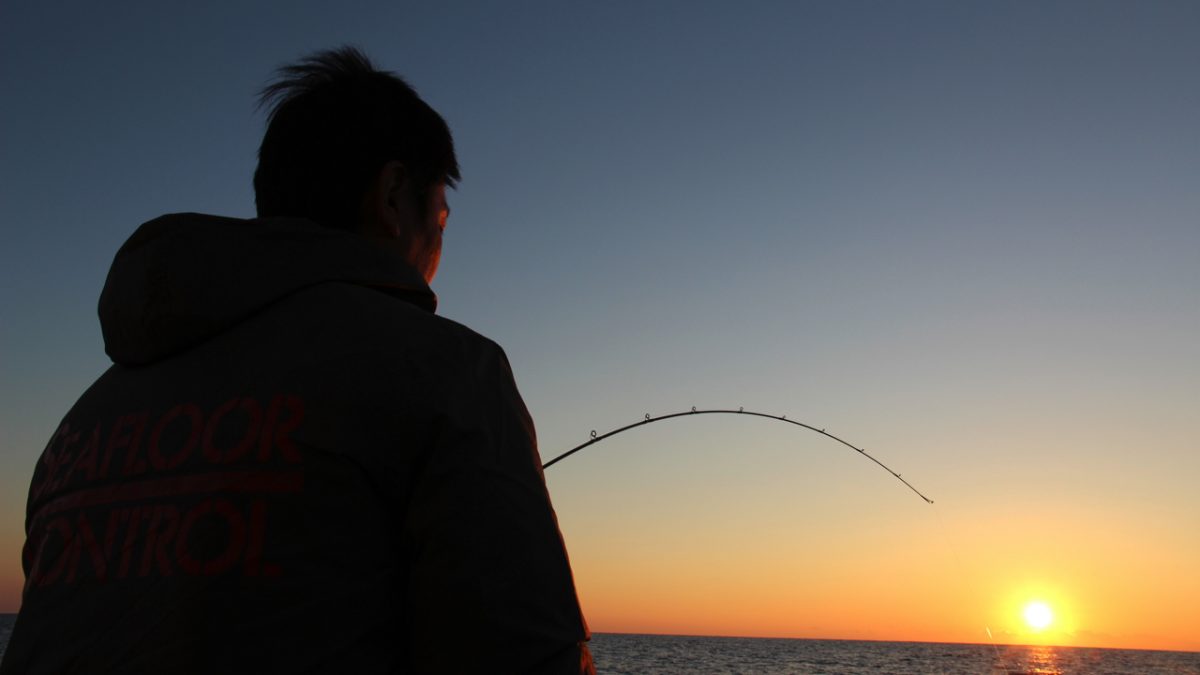
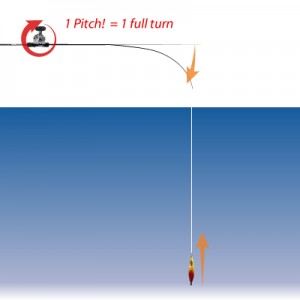
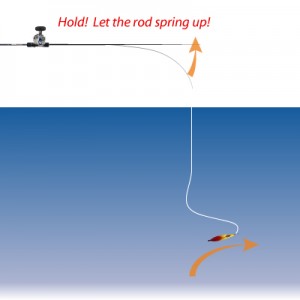
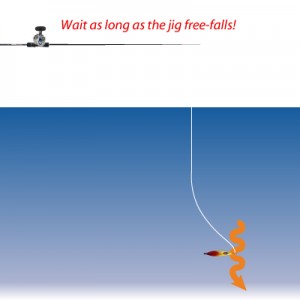
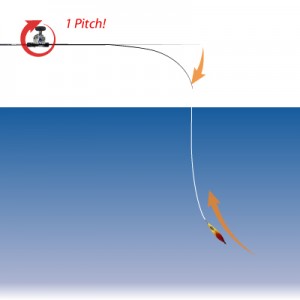
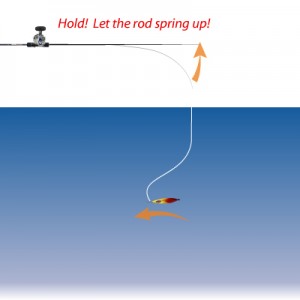

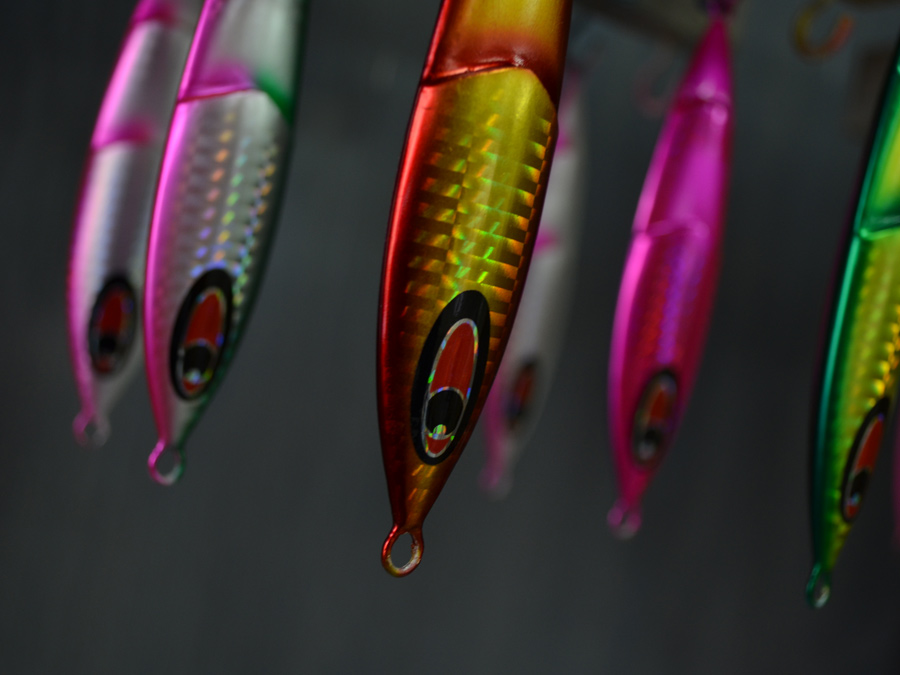
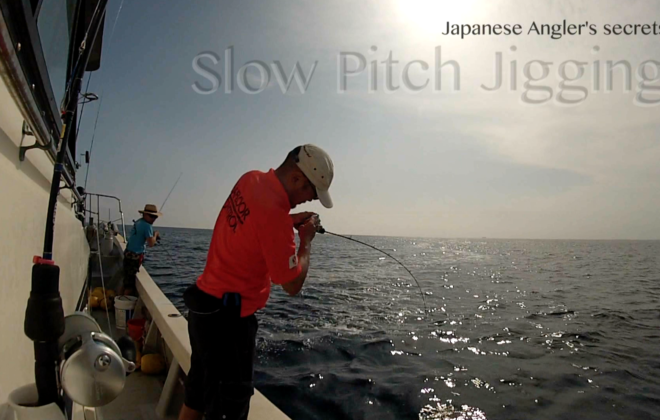
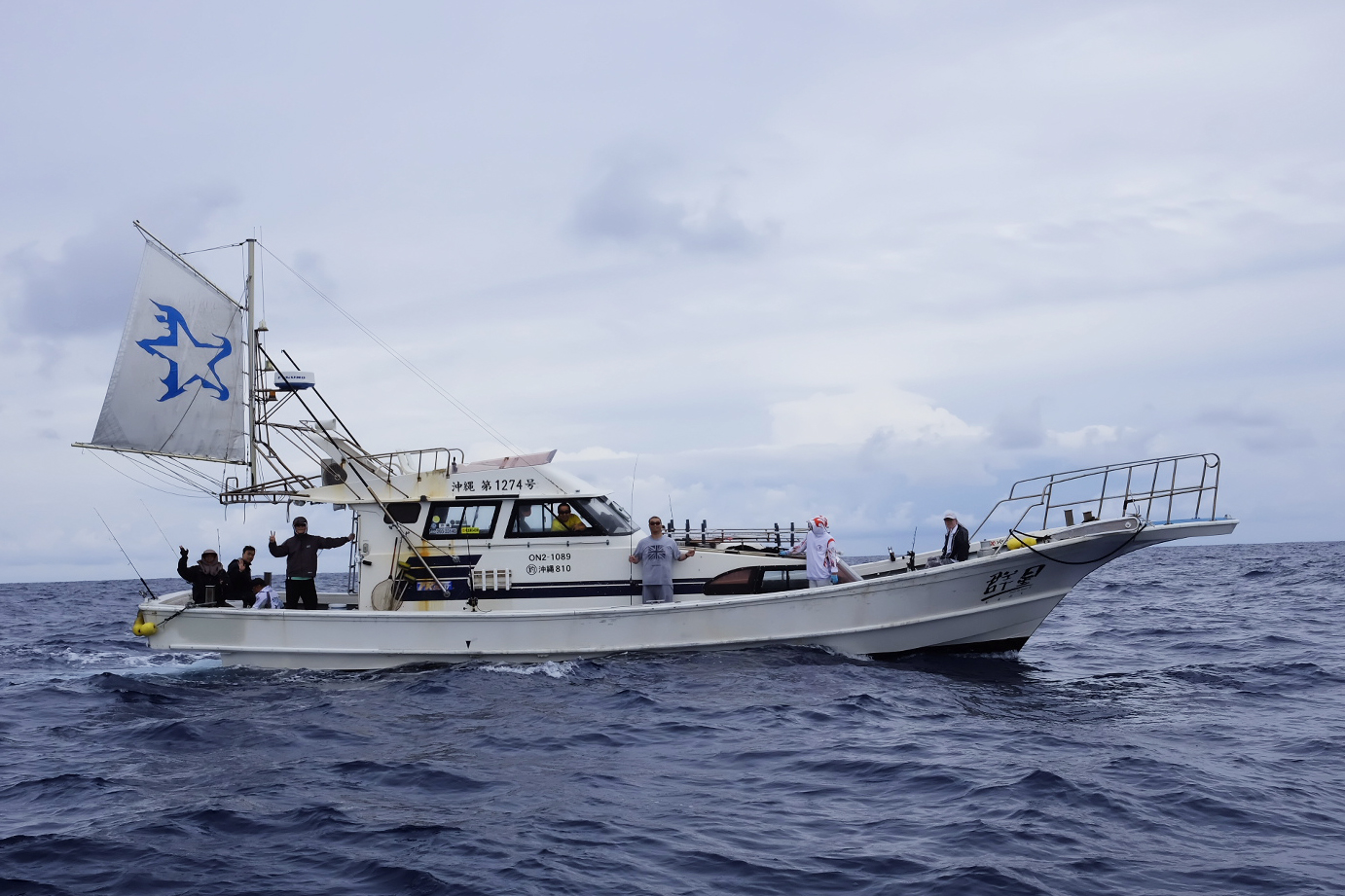
Hi there
I noticed most angler’s like to use the ocea jigger HG as opposed to the Pg? wouldnt a low gear ratio reel offer more cranking power?? why do japanese angler’s like the HG?
btw im looking at the palms metal witch slow fall rod! how do u find it? any online websites i can buy from as i live in Singapore!
btw really informative blog! thoroughly enjoyed reading it!! 🙂
Hi Daniel. Thank you for dropping by.
Hmmm… A good question. Ocea Jigger HG or PG? I agree with you that Japanese jiggers like HG more.
As you pointed out, it’a choice between more retrieve length per crank with HG and more cranking power with PG.
2000HG has max of 117cm per crank. That is about 75cm per crank when you are down at 100m deep. That is considered ideal for the jig movement with slow-pitch jigging. Plus, sometimes during the jig performance you put in small pitches like 1/2 and 1/4, and it still creates the nice changes of pace, while less speed model can’t perform such varieties.
You just need to work harder to pull up a fish with HG than PG. To compensate that a lot of jiggers install custom handle to Jigger HG. Longer in length, these handles make it easier to crank up.
Metal Witch rod by Palms is a good choice. A descent price with a nice cost-performance. I don’t know how you would find it in Singapore. I don’t think Japanese shops do international shipping. I know someone in Thailand does international business. I don’t know if they are good. I’ve just seen their web site.
Good luck and enjoy fishing!!!
oh man! really like that rod!! hahha oh well! looking at the major craft slow pitch as well as the Tenryu horizon SL!! but its wayyyy to expensive!! :(((
I do have a tailwalk snatch that i pair with a zillion PE for lighter jigs! but i need a heavier setup! haha
already got a OJ PG 1501!
Hi Daniel.
Yes, Tenryu is a nice rod. The price is pretty high but I think it’s got the matching quality.
Don’t bet on Giant Killing by Major Craft. I mean, they make nice rods at very low price and I like Crostage for my Eging. But not for Slow Pitch Jigging. Slow Pitch Jigging requires the highly elastic rod to spring back and pitch the jig. Giant Killing doesn’t have that, which is confirmed by my fellow jiggers also.
Stay with Metal Witch by Palms. Pair it up with your Ocea Jigger. That’s a slow pitch jigging.
But…… I think you want Tenryu, don’t you? I tell you what. If you use mainly 150g or lighter jig, go with Metal Witch. But if your main jig is heavier than 150g, make you stand and get Tenryu!!!
haha the water around malaysia and singapore is v shallow! sometimes only 10m!! that’s when i use 7 g.. but the deepest we get is only around 60-80m! i think i will get the palms!! but i hope i can find it!
Hi Daniel.
I understand your field is shallow. That figures. So you use jigs around 100g or less. Yes, Metal Witch will be good for you.
If you like, you might want to check out Rakuten Global. http://global.rakuten.com/en/
It’s Japan’s largest web shopping site. I didn’t know they had the global site which does international shipping. I checked and they do have Metal Witch in stock. You need to pay for the shipping and your customs in your county, but you might find it convenient.
For your additional information, there’s a jig that works very well around here in shallow water.
Sea Ride by Blue Blue
Check out their YouTube. https://www.youtube.com/watch?v=it1oux2w_IU
Good luck!!!
yup thks! tried to find the sea ride! but they have an online shop in yahoo! but its all in Japanese which i dun understand!! :((
oh btw! can u recommend me any popping rod thats pe 1.5-3. gonna pair it with a certate HD custom 3500! thinking about the palms sea rapture!
Hi Daniel.
Unfortunately, I don’t have any feedback on Palms Sea Rapture A rod to compare with it would be Daiwa Catalina All-rounder. It’s got solid reputations. If you mean to go into off-share casting game and really explore it, this would be an ideal entry model.
But also, you would probably want to look one level down at Major Craft Offblow and Golden Mean Crossbow. If you want to save some money, this is where you may want to do it. Popping doesn’t need a high quality rod to get going. Unless you are going into off-shore casting game in a serious mode, you might as well settle with these.
Ciao
hey! i checked out the rakuten site! they only have the palms long fall model! they dont have the slow fall one! 🙁 haha oh well too bad!
oh no sorry im spamming hahaha! gonna be using 80-100g jig! i think the MTGC-632SF is just nice! but rakuten does not have that! gonna start hunting again!
Hi Daniel. I found these 2 posts on MTGC-632SF.
http://global.rakuten.com/en/store/auc-magnetinc/item/mg1651/?s-id=borderless_browsehist_02_en
http://global.rakuten.com/en/store/tsuribitokan/item/4562199780492/?s-id=borderless_browsehist_02_en
Aren’t these what you are looking for?
AWESOME!! ahah gonna order them now!!!
Hello,
I’m really like your website, it’s look like you put a lot of love into this type of fishing.
The slow pitch system look very nice, I hope to work on it on coming season and mix it with light jigging.
I’m working on 20-50 meter depth with usually 55-75 g vertical lures,
How much the rod length will affect the slow pitch?
I’m looking for Tenryu HORIZON SL HSL66B-ML that design for slow pitch,
http://fishing.tenryu-magna.com/en/offshore/horizon_sl.html
However it’s 198 cm long and compare to it the Tenryu off shore light progressive OPG601B-L that is 182 cm
http://fishing.tenryu-magna.com/en/offshore/osl_progressive.html
Is it an issue? What is your recommendation on this rods?
Best regards and good fishing time,
Kobi Shalom
Hi Kobi.
Thank you for your interest in this game. Glad you found this site helpful.
All the rods are balanced and tuned including the length. I don’t think there’s much difference in handling 182cm and 198cm, even though the shorter rods are easier to make small subtle actions while the longer rods work better with long-fall jerks.
But the class I recommend is a heavier one. Slow pitch jigging requires a vertical alignment with the jig. If you are spankered like most Japanese jigging boats are, you can just play with 100g in your depth. But you probably need heavier jigs. Choose a rod to play with 150g to 180g jigs.
Good luck!
Hi Totos,
Thanks and appreciation for your answer!
I’m fishing from kayak so distance is quite limited,
5-7 Km from shore give us 50 meter depth so we usualy use up to 100 g jigs.
I think to go with the 150 gram rod and use it with 100 gram jigs,
hope to find good balance between them.
Thanks and have a good fishing time,
Kobi Shalom
Hi Kobi.
It’s all about staying vertical. Use a heavier jig, 150g if possible. Use a thin, maybe PE1.5 or PE1.2. Use sea-anchor. Some kayak jiggers here use a bucket on a rope to slow down the wind drift. If you can stay vertical without them, don’t worry about them.
One more note is that high carbon slow pitch rod can easily crack. Be careful when you land the fish. Make sure to wear down the fish, grab the line with your hand and use a net or a gaff. Never lift up the fish with your rod on a kayak!
Hello Totos,
I realy like this one https://www.youtube.com/watch?v=IlDK35D3sJA !!!
Extensively detailed with beautiful fish 🙂
I’m curious how Jig size is impact the fish behavior,
Jig that weighs 150 grams are usually larger and for shallow/depth of 3-40 meters with fish weighing around 2-4 kg (grouper and red snapper),
Is a fish with such weight will attack a big/heavy lure?
Or is it better to work with small weights such as 60-80 grams that are smaller size?
Thanks,
Kobi Shalom
Hi Kobi.
Thank you for your comments and insights. We wish we could catch fish and ask them, don’t we?
There’s no absolute answers, I don’t think. But there are certain patterns we can build our tactics on.
I’m not talking about tunas or other frenzy fish around the bait ball, who bite on anything.
I would start with a heavy jig with weak settings, going for a big one. Then if I don’t get contacts, I size down the jig. But not just changing to lighter jig, change to the lighter tackle too. Otherwise you would end up performing a small but very fast moving bait. Jig – rod match is very very important to set the tone of the movements, which I think sometimes is more important than the size of the jig.
[…] How to make actions in Slow Pitch Jigging | Japanese Anglers Secrets […]
Hi frinds
I have one qustion
Wich rod is sutable for the omoto talos reel (TS10N )
お疲れ様でした
thank you so much for this. very excellent write up. i am going, hopefully if the weather/tide conditions are suitable, with my friends jigging in a couple of weeks. i watched the video with Sato-Sama i was able to understand a little bit but this explains everything so well.
one question, i have poseidon slow-jerker 603-6, just ordered tailwalk elan wide power + 71, and i have sunline saltimate PE jigger ULT 2号. what leader do you recommend and what size? also, will this set-up be good and what do you think of tailwalk elan wide power + 71 reel?
ありがとうございました
Hi Mindaugas
Leader should be determined by your target.
http://anglers-secrets.com/v2020/my-terminal-setup-illustration/
Reel is not supposed to be determined in the combination with the rod. My recommended reels will stay the same.
If you want to find your own, just follow the guideline.
“Basically you need an overhead reel that retrieves about 75cm per crank or more at the depth where you are fishing. Say, you have the reel with 85cm max retrieve per crank. That is the speed when The line is fully loaded. When you let out 100m of line, the speed may be down to 75cm per crank.”
http://anglers-secrets.com/v2020/reels-for-slow-pitch-jigging/
hi there ,
i love your site
i m new to jigging and fishing
i bought maxel transformer reel f50 and a maxel rod 684 slow jigging . ( both cost me around 450 usd )
is that a good combo ? if not plz recommend a good one with almost same price .
thanks 🙂
Hi Mohamed.
Welcome to the world of jigging. Learning and understanding is a part of fishing.
The tackle settings depend greatly on the depth range of your field, how your boat is operating (how vertical you can stay), and what size targets you focus on mainly. Get those facts, and try to see if your tackle fit into it, based on what I explain on the website.
Let me know if you have more specific questions.
Hi totos,
Very informative site indeed! I am fishing in Greece ( slow jigging of course) at 80 to 150 meters and with frequent tides making too difficult to stay vertical, I have used a floating anchor with the engine when tide is strong but the need for heavier jigs is a must . I have tried sea Floor control jigs and found (following the site information) that Arc at 260 gms is the only one that really works . Mind you that the messiah jig is very difficult to find and also according to a friend there will be a new messiah jig coming up is that true? and if so when? . Again keep it up with this site for all slow jigging maniacs like me THANK YOU!
Hi George.
Yeah, staying vertical is the key.
In the non-vertical condition, Arc is certainly the dependable jig. I would also try Spunky 270g and 300g, and Arrow 260g and 290g.
I’ve never heard of new Messiah. I doubt it. They only produce Messiah one or twice a year. That is why the stock is always so low.
But don’t think the jig selection is never the only choices you can make. You can change your line. You can change your actions. You can change the hook setting. They all matter.
Don’t give up! Good luck!
Hi Totos,
Thank you for what you do. Every thread in every website with talk of slow jigging gets directed to you here at JAS.
I’m torn on which rod to get as they’re either a bit too expensive or hard to source. I can get a Horizon SL for a reasonable price. Can the rods be pumped a bit or do you have to fight the fish with the reel? I come from fishing tuna so I fear breaking the rod. Which model Horizon would you recommend for the following conditions:
Boat – free drift
Depth – 50-120m
Current – strong
Target species – Amberjack, Snapper and grouper.
Would I need 150-220g lures to stay vertical depending on their action? Thanks.
Hi Kieron.
This Tenryu rod is a pretty good slow pitch rod. This one is a lot more enduring than Slow Jerker. But slow pitch rods are tuned best to dance the jig, not to pump up the fish. We do use the rod to fight too, but we don’t life up the rod any more than 2 o’clock (3 o’clock is horizontal). We use our weight shift too.
When you hook a big fish, it’s important to control the fish fight with short pumping. Long stroke pumping is really not efficient. You don’t have to lift up the rod high for short pumping.
If you are free-drifting over 80m, you would need super friendly conditions to stay vertical. I would encourage you to explore more in 50m to 80m depth with jig weight 150g to 300g. Use Power 4 rod.
Good luck.
Thank you Totos. I saw your videos and read the topic about why you don’t pump slow pitch rods. I will also try to control my drift and will look into those underwater drift socks.
Hi Kieron.
You are very welcome and I’m glad you found my website helpful to you.
Yes, staying as much vertical as possible is the key factor for slow pitch jigging.
You can pump the rod or use your weight shift instead, but when you confront with a big fish, short pumping is the way to go.
Good luck.
Totos
Hi Toto,
I’m new to this slow jigging scene and ready to buy my first gear. Your site provided almost all the information and many thanks for that. Just wondering, why don’t we use our dominant hand to hold the rod and use less dominant hand to crank? Isn’t that sounds more natural?
It looks like this techniques relies heavily on pitching technics, just like casting.
What do you think?
Thank you.
Hi Dux.
Welcome to slow pitch jigging.
Actually you can do it either hand. You just need to get used to one.
But I think your dominant hand can do more detailed work, which reel requires. As far as the power is concerned, you don’t need much but you need input about the same power to rod and reel. (You are misunderstand if you think you lift with only rod hand, since you should use both hands). Therefore, I think it makes more sense if you use your dominant hand on reel. But, really, the difference is little and you just need to get used to either side.
Hi TOTO
Wath do you think about HEARTY RISE SLOW JIG II ROD 170-340g?
From Hatem from Tunisia
Hi Chaaba.
I don’t know this rod as it is not Japan brand and not available here. Sorry.